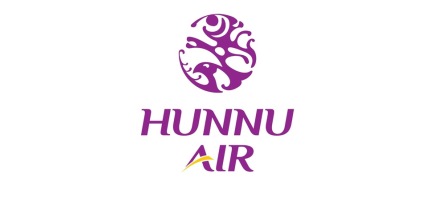Events
| Name | organizer | Where |
|---|---|---|
| MBCC “Doing Business with Mongolia seminar and Christmas Receptiom” Dec 10. 2025 London UK | MBCCI | London UK Goodman LLC |
NEWS
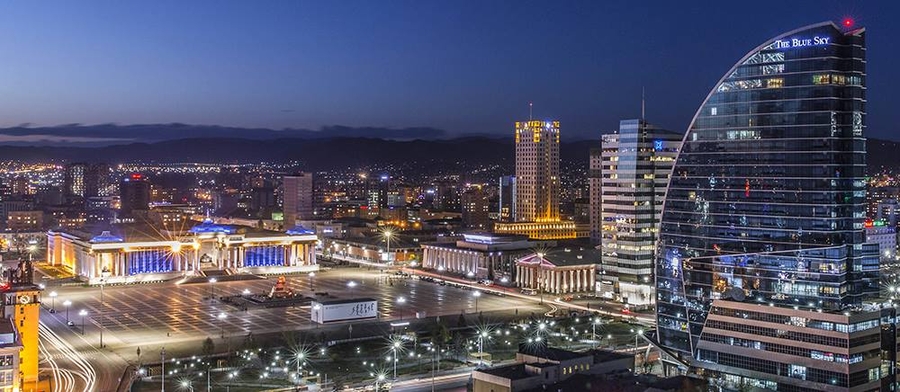
Mongolia issues seven international bonds since 2012 www.news.mn
Since 2012, Mongolia has issued seven international bonds worth USD 5.2bn, with all but the first sovereign bond, the Chinggis Bond—named after founder of the Mongol Empire, Chinggis Khaan, or Genghis Khan—used to finance state budget deficits. It’s also a time to once more observe that the Chinggis Bond, the only bond used to finance projects, has been mismanaged.
Since 2013, Mongolia has drawn nearly USD 3.7bn in swap agreement loans from China’s central bank. As of 2020, it had repaid $1.5bn of the lent capital, while receiving another extension on debt repayment stretching to the end of 2023. This loan is one of the first Mongolia must repay.
With the exception of 2018, Mongolia’s annual state budget expenditure has exceeded its income throughout the past decade. (source: bne IntelliNews )
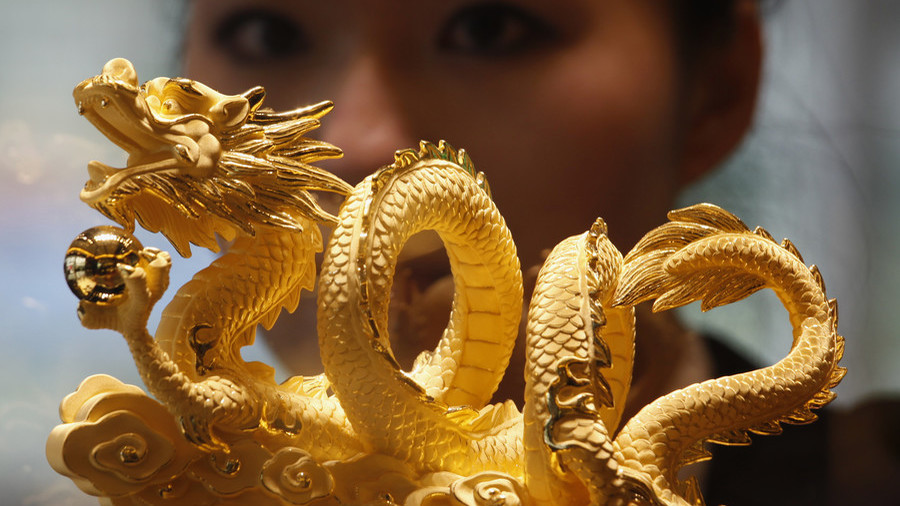
The 5,800 legal entities with Chinese investment registered in Mongolia www.news.mn
In recent years, the comprehensive strategic partnership between Mongolia and China has developed rapidly, leading to accelerated investment and trade activities between the two countries. From the 5,800 legal entities with Chinese investment registered in Mongolia, 1,690 have stable operations and pay taxes.
China is Mongolia’s biggest investor as it accounts for 21 percent offoreign direct investment (FDI) to the country and over 50 percent of Mongolian companies with foreign equity. China’s investment in Mongolia reached USD 108 million, of which 68percent comes from the mining sector, and 21 percent from trade andthe food sector.
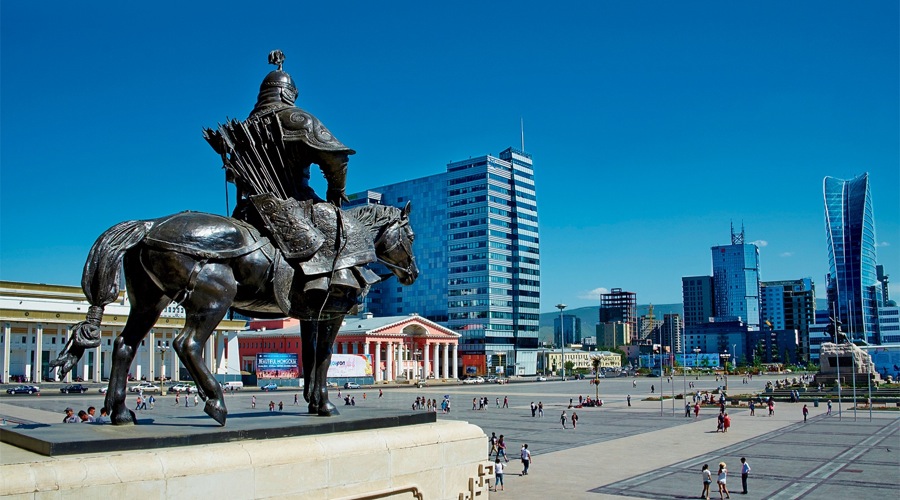
National Email Service launches operations www.montsame.mn
In May, the Cabinet made a decision to launch National Email Service within this year. In accordance with the decision, works are underway to issue email addresses to the citizens, reported L.Enkh-Amgalan, the Acting Minister of Digital Development and Communications, during the press conference to present the decisions made at the Cabinet meeting.
In specific, the Ministry started issuing email addresses to citizens over the age of 16 through the E-Mongolia platform. Launching the email service will allow citizens to directly engage with civil servants and is believed to eliminate bureaucracy and save time and money. For example, important notifications will be delivered to the citizens to remind, for instance, the expiration date of the passport, driver’s license, national ID card, etc., and other important information. Moreover, citizens will be able to freely file complaints and receive necessary information with the help of the email service.
“As of today, 680 government services have been digitalized and added to the E-Mongolia platform and now we are working to integrate the services of local administration units to the platform”, said the Acting Minister.
According to the ‘Household and Personal Information, Communication and Information Technology Usage Survey’ conducted by the Ministry of Digital Development and Communications and the National Statistics Office of Mongolia in 2021, 43.8 percent of the survey’s participants had sufficient digital literacy skills.

Mongolia launches guidelines on environmental, social and governance and sustainability reporting standards www.undp.org
As part of the concerted effort to increase and mobilize resources from the private sector for Mongolia’s progress towards achieving the SDGs, development partners, including UNDP, partnered with Mongolia’s financial sector authorities and released “The ESG and Sustainability Reporting Guidance for Mongolian Companies” for listed companies, prospective issuers, and other interested companies.
The Guidance provides an overview of global sustainability reporting frameworks and trends, followed by an eight-step outline of how listed companies and other issuers can build the capacity to report on sustainability. Also included in the document are lists of indicators that companies can select from to fulfill their sustainability disclosure requirements.
“By introducing this ESG disclosure and sustainability reporting guidance in line with international standards, we hope to harness good ESG management and disclosure market practice and help issuers and other financial institutions in creating long-term value that benefits Mongolian financial market as a whole. We also believe that the public, investors, and stakeholders will benefit from improved transparency and disclosure practices” says Mr. Bayarsaikhan Dembereldash, Chair of the Financial Regulatory Commission (FRC).
The Guidance also outlines how ESG reporting could benefit the companies; especially, in terms of meeting international investors’ demands and accessing a more diverse range of longer terms financing while complying with the regulators’ requirements and further strengthening their brand reputation internally and externally.
“The Government of Mongolia is taking important initiatives to revive the local economy and transform it in-line with sustainable development principles. As a main driver to thrive economies, businesses and private sector entities must commit to sustainable corporate practices, including improving its transparency and alignment with the Sustainable Development Goals. Therefore, the UN in Mongolia strongly encourages the Government of Mongolia to demonstrate its leadership in implementing the Integrated National Financing Framework and strategy with its reporting mechanism to catalyze transformative change and accelerate implementation of the SDGs for inclusive and sustainable development for all, which is envisaged in Mongolia’s Vision 2050,” said Mr. Tapan Mishra, UN Resident Coordinator in Mongolia.
Efforts to integrate sustainability in financial analysis and investments globally are often hindered by a lack of quality ESG reporting data. This is also the case in Mongolia where, according to the analysis of a recent study carried out by the Mongolian Sustainable Finance Association (MSFA), only 13% of companies listed on the stock exchange publicly disclose their environmental indicators.
UNDP Mongolia’s Resident Representative Ms. Elaine Conkievich emphasized the importance of the Sustainability Reporting Guidance and stated, “The adoption of ESG and sustainability reporting standards provides the private sector with the possibility to unlock a variety of opportunities and access potential investment opportunities while integrating sustainability factors into their business decisions and thus contributing towards achieving the SDGs.”
“The Sustainability Reporting Guidance for Mongolian Companies” was developed through a partnership between the FRC, MSE, MSFA, International Finance Corporation, UNDP-hosted Financial Centres for Sustainability Network, United Nations Environment Programme, United Nations Development Programme and United Nations Resident Coordinators’ Office in Mongolia, with support from the Global Environment Facility and UN Joint SDG Fund.
***
UNDP is the leading United Nations organization fighting to end the injustice of poverty, inequality, and climate change. Working with our broad network of experts and partners in 170 countries, we help nations to build integrated, lasting solutions for people and planet. Learn more at mn.undp.org or follow at @UNDPMongolia.
For further inquiries:
Delgernaran Tumurtogoo | National Project Coordinator | UN Joint Programme on “Rolling Out an Integrated Approach to the SDG financing in Mongolia” | UNDP Mongolia | delgernaran.tumurtogoo@undp.org
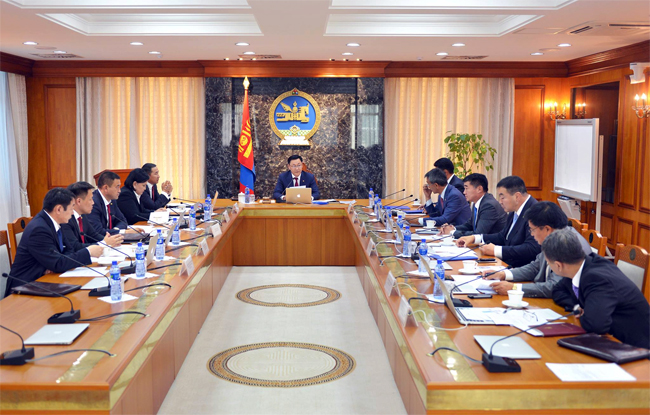
Implementation of government's 2020-2024 action plan is 48.9 percent www.montsame.mn
Chief of Cabinet Secretariat Ts.Nyamdorj presented the progress of the implementation of the Government Action Plan for 2020-2024 and the Development Plan of Mongolia for 2022 to the Cabinet members.
As of the first half of this year, the implementation of the Government Action Plan for 2020-2024 is at 48.9 percent. During the cabinet meeting, the relevant officials were instructed to bring the objectives and measures that are delayed depending on the management and organization to the target level at the end of this year, and to study and solve the possibilities and conditions for the implementation of the ones that are delayed due to finance and investment by attracting foreign loans, aid, and private sector investment in addition to the state budget. Moreover, the Prime Minister instructed to have draft laws to be submitted to the State Great Khural in 2022 discussed at the Cabinet meetings within this year.
The Development Plan of Mongolia for 2022 is completely aligned with the general guidelines for the country’s development in 2021-2025 and the action plan for 2020-2024. The plan has been approved with 300 projects and measures with 6 groups and 23 goals, and as of the first half of this year, 47.6 percent of the implementation has been achieved. The members of the government and the heads of relevant agencies were instructed to clearly reflect the amount of funds spent on the performance of that year's work, the fulfillment of the criteria, and the results in the report on the implementation of projects and measures.
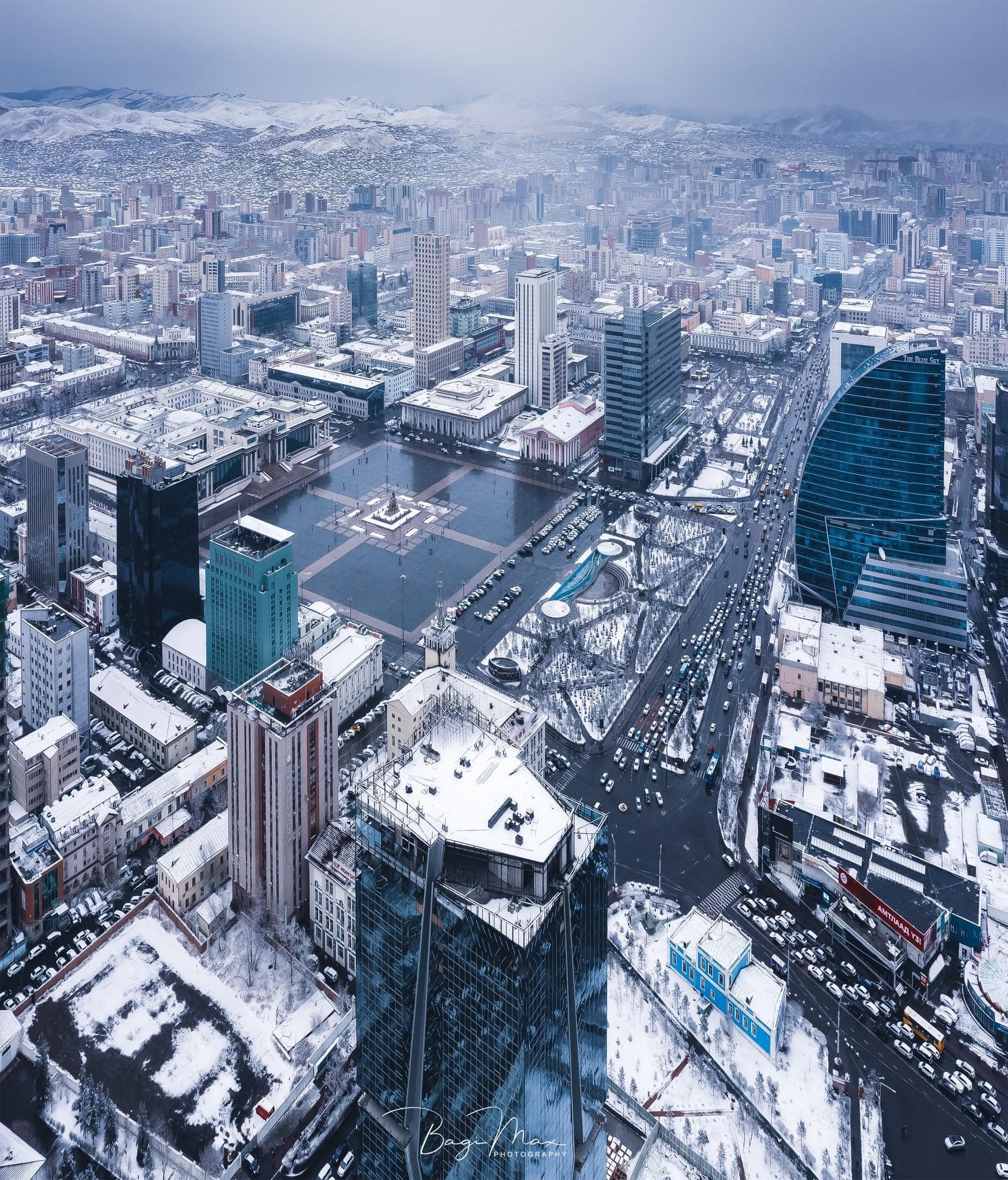
Gross industrial output increased by 2.0 percent from the previous month www.montsame.mn
By the preliminary results, in the first 7 months of 2022, the gross industrial output reached MNT 10.6 trillion, decreased by MNT 244.3 billion (2.3%) from the same period of the previous year. This decrease was mainly due to MNT 509.3 billion (6.7%) decrease in mining and quarrying production gross output. Also, the manufacturing production output increased by MNT 202.5 billion (8.8%), the electricity, thermal energy and water supply production output increased by MNT 44.9 billion (5.7%) and the water supply, and sewerage, waste management, and remediation activities production output increased by MNT 17.7 billion (19.6%) from the previous year.
In July 2022, the gross industrial output reached MNT 2.0 trillion, increased by MNT 40.4 billion (2.0%) from the previous month. In July 2022, the sales of industrial products reached MNT 2.8 trillion, increased by MNT 377.4 billion (15.3%) from the previous month.
By the preliminary results of the first 7 months of 2022, the mining and quarrying gross output reached MNT 7.1 trillion, decreased by MNT 509.3 billion (6.7%) from the same period of previous year. This decrease was mainly due to decreases in mining of coal and lignite by 428.0 billion (20.6%) and extraction of crude petroleum by MNT 403.8 billion (73.7%) from same period of the previous year. By the preliminary results of the first 7 months of 2022, the mining and quarrying sector, extraction of zinc concentrate and silver concentrate increased by 36.9-85.0 percent compared to the same period of the previous year. In the mining and quarrying sector, the extraction of iron ore, gold, brown coal, copper concentrate, fluorspar, hard coal and crude oil decreased by 2.5–87.9 percent.
In the manufacturing sector, production of spirit, cement, pure water, soft drink, juice, alcoholic beverage, cashmere products, lime and combed cashmere increased by 5.6-81.0 percent compared to the previous year. In the manufacturing sector, productions of copper cathode (99%), milk, cigarettes, coal briquette, wheat flour, face covering, metal steel, meat, sanitizer and concentrated coal decreased by 2.6–96.6 percent compared to the same period of the previous year.
By the preliminary results of the first 7 months of 2022, the sales of industrial products reached MNT 14.3 trillion, decreased by MNT 104.1 billion (0.7%) compared to the same period of the previous year. This decrease mainly resulted from MNT 392.3 billion (3.7%) decrease in sales of mining and quarrying products.
The sales of mining and quarrying products decreased by MNT 392.3 billion (3.7%) compared to the same period of the previous year. This decrease mainly resulted from MNT 351.4 billion (68.3%) decrease in sales of crude petroleum products, MNT 192.1 billion (2.7%) decrease in sales of mining of metal ores products and MNT 137.5 billion (63.8%) decrease in sales of other mining and quarrying products, respectively.
By the preliminary results of the first 7 months of 2022, the total sales of industrial products, MNT 8.3 trillion was export, of which 7.9 trillion was export of mining and quarrying output. The mining and quarrying products structure shows that 66.2 percent was metal ores, 31.2 percent was coal and lignite, 2.1 percent was extraction of crude petroleum and 0.5 percent was other mining. In July 2022, the seasonally adjusted industrial production index was 146.0 (2015=100), decreased by 4.7 percentage point from the same period of the previous year.
Source: National Statistics Office of Mongolia
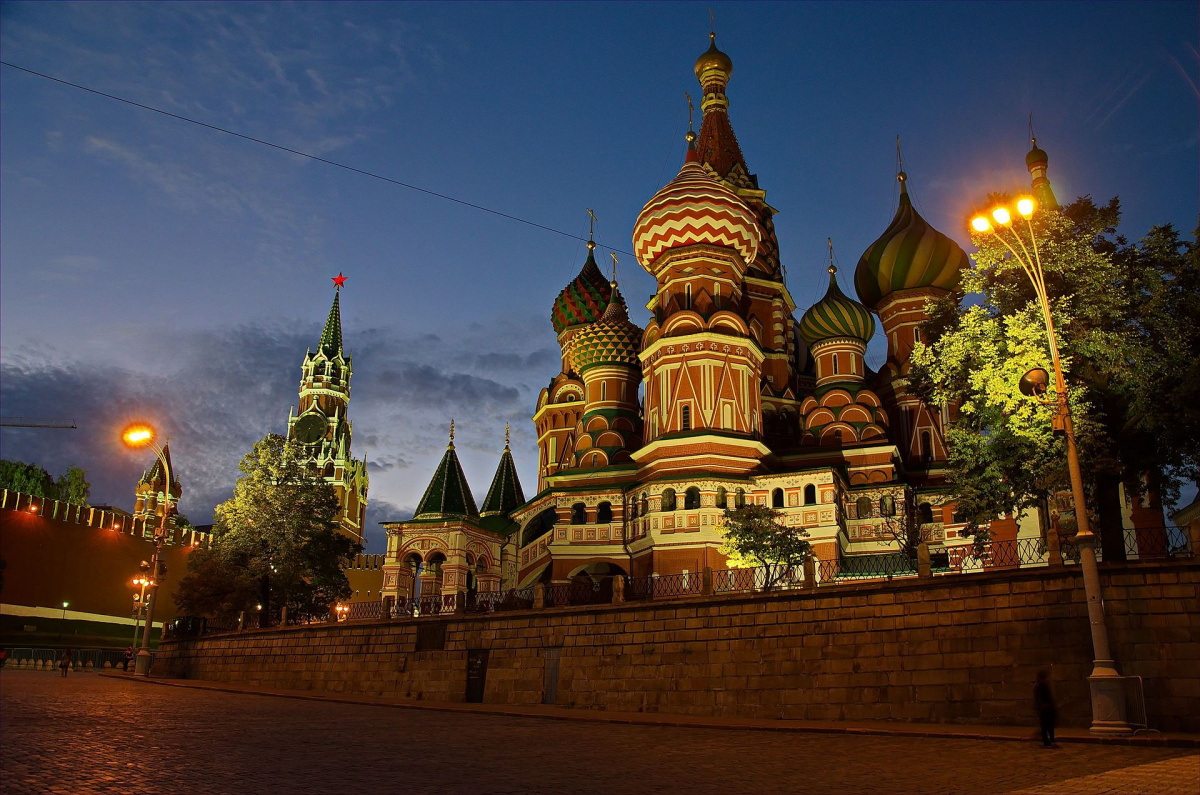
Russia offers trade partners to join its SWIFT alternative www.rt.com
Russia has offered countries belonging to the Shanghai Cooperation Organization (SCO) to join its financial messaging system (SPFS), the Russian equivalent of SWIFT. Moscow wants to boost the volume of settlements in national currencies, the country's Economic Development Minister Maxim Reshetnikov said on Tuesday.
“In order to ensure uninterrupted cooperation between our banks, we suggest that members of the organization join the Russian financial messaging system,” Reshetnikov said in his video address to participants at the SCO forum in Uzbekistan.
Reshetnikov noted that SCO countries need to continue to promote full compatibility of national payment systems and boost the volume of mutual settlements in national currencies.
“We already see positive results, for example, a quarter of the trade turnover between Russia and China is settled in rubles and yuan,” Reshetnikov said.
The SCO currently comprises eight member states: China, India, Kazakhstan, Kyrgyzstan, Russia, Tajikistan, Pakistan and Uzbekistan, while its partners and associates also include Afghanistan, Belarus, Iran, Mongolia, Armenia, Azerbaijan, Cambodia, Nepal, Turkey and Sri Lanka. The organization’s work focuses mainly on security issues, but it also deals with regional development tasks.
Russia has been actively promoting its domestic financial messaging system ever since being cut off from SWIFT as part of Western sanctions imposed on the country over the conflict in Ukraine. Both facilitate financial transactions between banks, but Russia’s SPFS was used only in Russia up until this year, while SWIFT is an internationally adopted system.
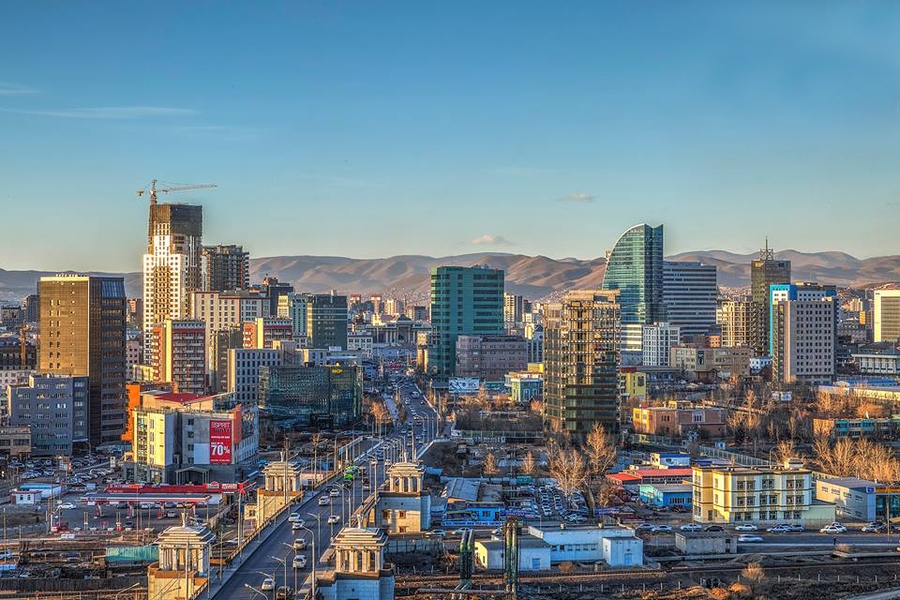
‘MIK Holding’ JSC presents its report for the first half of 2022 www.montsame.mn
‘MIK Holding’ JSC, registered in the first classification of the Mongolian Stock Exchange, presented its financial and operational report for the first half of 2022.
During the reporting period:
• Total assets decreased by 8.8 percent from the same period last year due to the payment of the ‘Oelun’ bond, reaching MNT 3,853.6 billion as of June 30, 2022.
• The market value of the company reached MNT 287.4 billion.
• A total of MNT 82.9 billion was paid to the bondholders from the reserve fund of the special purpose company due to the postponement of the principal and interest payments of the housing mortgage loans implemented by the government until the end of 2022 without interest accrual.
‘MIK Holding’ JSC has been operating for the 16th year with the vision and mission of creating a housing financing ecosystem, and in the past, more than 90,000 households have received long-term mortgage loans.
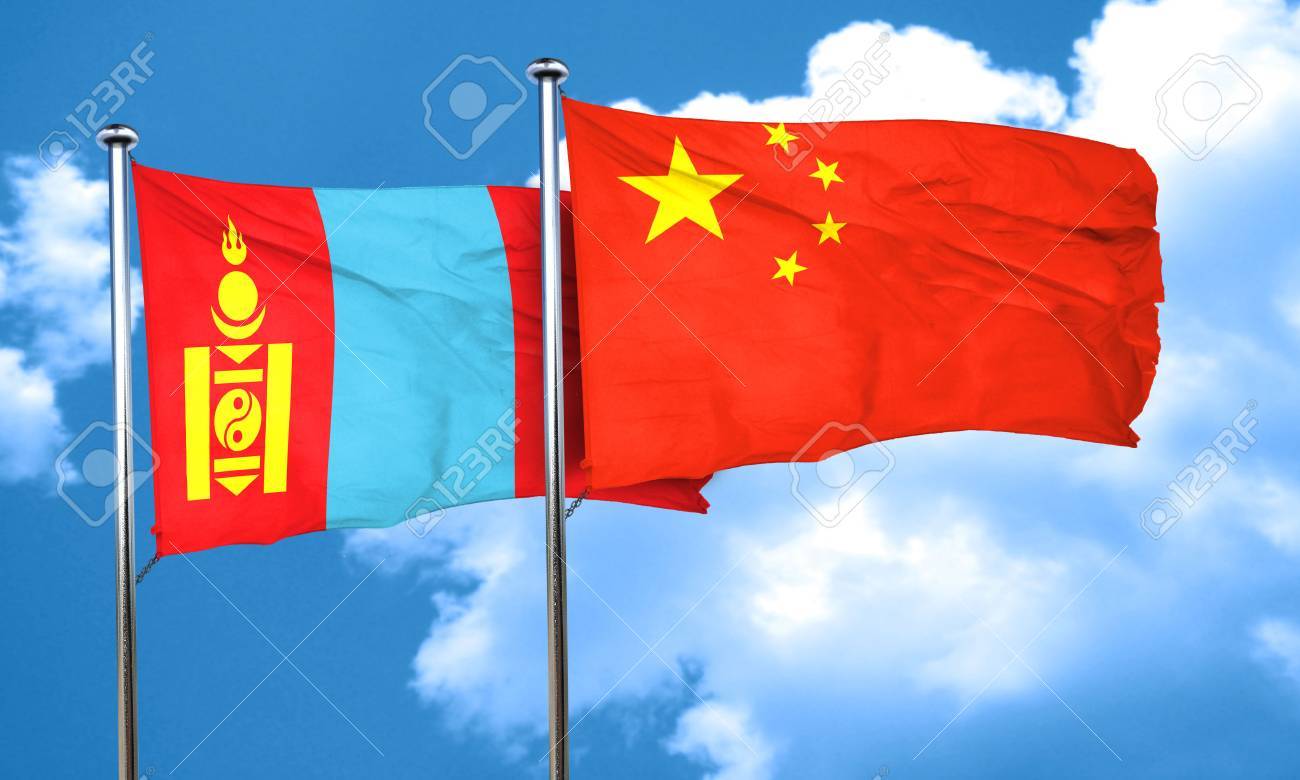
China-Mongolia DTA: What Are the Key Elements? www.china-briefing.com
It is important for businesses of both countries to understand and avail the benefits derived from the double tax avoidance agreement signed between China and Mongolia to ease their tax burden.
In recent years, the comprehensive strategic partnership between Mongolia and China has developed rapidly, leading to accelerated investment and trade activities between the two countries.
From the 5,800 legal entities with Chinese investment registered in Mongolia, 1,690 have stable operations and pay taxes.
In this situation, it’s important for businesses of both countries to understand and avail the avoidance agreement (DTA) signed between China and Mongolia to ease their tax burden.
Upon the establishment of the modern tax administration of Mongolia in 1991, China was the first country to sign “The Agreement for the Avoidance of Double Taxation and the Prevention of Fiscal Evasion with respect to Taxes on Income” with the Government of Mongolia (China-Mongolia DTA).
In this article, we briefly introduce the key elements of the DTA established between Mongolia and China.
Key elements of the China-Mongolia DTA
Personal scope
The China-Mongolia DTA applies to persons who are residents of one or both of the Contracting States, i.e., Mongolia and China.
Residents refer to any person who, under the laws of that State, is liable to pay local taxes by reason of their domicile, residence, place of head office, or any other criterion of a similar nature.
Taxes covered
The China-Mongolia DTA applies to taxes on income imposed on behalf of each Contracting State, irrespective of the manner in which they are levied.
Taxes on income refer to to all types of taxes imposed on income and components of income, including income taxes on sales of movable and immovable property and income taxes on increases in property valuation.
In case the business entity of a Contracting State operates via a local representative office, only corporate income on revenue generated by the representative office can be taxed.
The existing taxes (at the time of signature) to which the China-Mongolia DTA shall apply in Mongolia are:
Individual income tax;
Income tax for enterprises with foreign investment;
Income tax concerning foreign enterprises; and
Local income tax.
The existing taxes (at the time of signature) to which the China-Mongolia DTA shall apply in Mongolia are:
Individual income tax;
Income tax for enterprises with foreign investment and foreign enterprises; and
Local income tax.
To be noted, this China-Mongolia DTA shall also apply to any identical or substantially similar taxes which are imposed after the date of signature in addition to, or in place of, the abovementioned taxes. The competent authorities of China and Mongolia shall notify each other of any substantial changes which have been made in their respective taxation laws within a reasonable period of time after such changes. For example, China unified the income tax for domestic enterprises and foreign invested enterprises in 2008.
Income from immovable property
Income derived by a resident of a Contracting State from immovable property situated in the other Contracting State may be taxed in that other Contracting State.
The term “immovable property” is defined by the law of the Contracting State in which the property in question is situated. It includes property accessory to immovable property, livestock and equipment used in agriculture and forestry, rights to which the provisions of general law respecting landed property apply, usufruct of immovable property and rights to variable or fixed payments as consideration for the working of, or the right to work, mineral deposits, sources, and other natural resources. However, ships, aircraft, and land vehicles shall not be regarded as immovable property.
Business profits
The profits of an enterprise of a Contracting State shall be taxable only in that Contracting State unless the enterprise carries on business in the other Contracting State through a permanent establishment. If the enterprise carries on business as aforesaid, the profits of the enterprise may be taxed in the other Contracting State, but only so much of them as is attributable to that permanent establishment.
The term “permanent establishment” means a fixed place of business through which the business of an enterprise is wholly or partly carried on. It includes a place of management, a branch, an office, a factory, a workshop, any place of extraction of natural resources, as well as a building site/construction/assembly/installation project/supervisory activity that continue for a period of more than 18 months and the furnishing of services that continue for the same project or a connected project for a period or periods aggregating more than 18 months.
Dividends
Dividends paid by a company which is a resident of a Contracting State to a resident of the other Contracting State may be taxed in that other Contracting State.
However, such dividends may also be taxed in the Contracting State of which the company paying the dividends is a resident and according to the laws of that Contracting State, but if the recipient is the beneficial owner of the dividends the tax should not exceed five percent of the gross amount of the dividends.
Interest
Interest arising in a Contracting State and paid to a resident of the other Contracting State may be taxed in that other Contracting State.
However, such interest may also be taxed in the Contracting State in which it arises and according to the laws of that Contracting State, but if the recipient is the beneficial owner of the dividends – the tax should not exceed 10 percent of the gross amount of the dividends.
Royalties
Royalties arising in a Contracting State and paid to a resident of the other Contracting State may be taxed in that other Contracting State.
However, such royalties may also be taxed in the Contracting State in which it arises and according to the laws of that Contracting State, but if the recipient is the beneficial owner of the dividends the tax should not exceed 10 percent of the gross amount of the dividends.
This applies to payments of any kind received as a consideration for the use of or copyright of literary, artistic, or scientific work, including cinematograph films and films or tapes for radio or television broadcasting.
Capital gains
The below capital gains derived by a resident of a Contracting State may be taxed in that other Contracting State:
Gains from the sale of immovables situated in the other Contracting state;
Gains from the sale of business property of a permanent establishment which an enterprise of a Contracting State has in the other Contracting State or of movable property pertaining to a fixed base available to a resident of a Contracting State in the other Contracting State for the purpose of performing independent personal services;
Gains from the sale of ships, aircraft, or land vehicles operated in international traffic or movable property pertaining to the operation of such ships, aircraft or land vehicles (taxable only in that Contracting State in which the place of head office of the enterprise is situated);
Gains from the sale of shares of the capital stock of a company the property of which consists directly or indirectly principally of immovable property situated in a Contracting State; and
Gains from the sale of other shares representing a participation of at least 25 percent in a company which is a resident of a Contracting State.
Gains from the sale of any property other than the abovementioned shall be taxable only in the Contracting State of which the seller is a resident.
Shipping, air, and land transport
Profits from the operation of ships, aircraft, or land vehicles in international traffic shall be taxable only in the Contracting State in which the place of head office of the enterprise is situated.
If the place of head office of a shipping enterprise is aboard a ship, then it shall be deemed to be situated in the Contracting State in which the home harbor of the ship is situated, or if there is no such home harbor, in the Contracting State of which the operator of the ship is a resident.
Methods for elimination of double taxation
In Mongolia, double taxation shall be eliminated as follows:
Where a resident of Mongolia derives income from China, the amount of tax on that income payable in China in accordance with the provisions of the China-Mongolia DTA, may be credited against the Mongolian tax imposed on that resident. The amount of credit, however, shall not exceed the amount of the Mongolian tax on that income computed in accordance with the taxation laws and regulations of Mongolia.
Where the income derived from China is a dividend paid by a company which is a resident of China to a company which is a resident of Mongolia and which owns not less than 10 percent of the shares of the company paying the dividend, the credit shall take into account the tax paid to China by the company paying the dividend in respect of its income.
In China, double taxation shall be eliminated as follows:
Where a resident of China derives income from Mongolia the amount of tax on that income payable in Mongolia in accordance with the provisions of the China-Mongolia DTA, may be credited against the Chinese tax imposed on that resident. The amount of credit, however, shall not exceed the amount of the Chinese tax on that income computed in accordance with the taxation laws and regulations of China.
Where the income derived from Mongolia is a dividend paid by a company which is a resident of Mongolia to a company which is a resident of China and which owns not less than 10 percent of the shares of the company paying the dividend, the credit shall take into account the tax paid to Mongolia by the company paying the dividend in respect of its income.
For full version of the China-Mongolia DTA, please click here.
Other cooperation between China and Mongolia
Within the framework of the “Comprehensive Partnership Strategy of Mongolia”, the Mongolian Tax Administration joined the Belt and Road Initiative Tax Administration Cooperation Mechanism – established as part of China’s “Belt and Road Initiative” to unite the tax administrations of countries located along the Silk Road. This enabled Mongolia to engage in bilateral and regional information-sharing on taxpayers.
Also, on January 17, 2018, an association of Chinese-funded companies in Mongolia was formed under the “Belt and Road Initiative”, uniting the local branches of the Bank of China, Air China, Industrial and Commercial Bank of China, Petro China, China Nonferrous Metal Mining, China United Cement Corporation, China Tiesiju Civil Engineering Group, and China National Tobacco Corporation in the country.
The main goal of the association is to support the relations between Mongolia and China by elevating the cooperation between Chinese business entities in Mongolia to an advanced level, allowing for resource-sharing between member organizations, and leveraging shared benefits, according to the Ministry of Foreign Affairs of China.
(Khandsuren Orgodol/Khanda works for DBiAA, one of Dezan Shira & Associates’ Asian Alliance Partners. She may be reached at admin@dbiaa.org.)
About Us
China Briefing is written and produced by Dezan Shira & Associates. The practice assists foreign investors into China and has done so since 1992 through offices in Beijing, Tianjin, Dalian, Qingdao, Shanghai, Hangzhou, Ningbo, Suzhou, Guangzhou, Dongguan, Zhongshan, Shenzhen, and Hong Kong. Please contact the firm for assistance in China at china@dezshira.com.
Dezan Shira & Associates has offices in Vietnam, Indonesia, Singapore, United States, Germany, Italy, India, and Russia, in addition to our trade research facilities along the Belt & Road Initiative. We also have partner firms assisting foreign investors in The Philippines, Malaysia, Thailand, Bangladesh.
- «
- 1
- 2
- 3
- 4
- 5
- 6
- 7
- 8
- 9
- 10
- 11
- 12
- 13
- 14
- 15
- 16
- 17
- 18
- 19
- 20
- 21
- 22
- 23
- 24
- 25
- 26
- 27
- 28
- 29
- 30
- 31
- 32
- 33
- 34
- 35
- 36
- 37
- 38
- 39
- 40
- 41
- 42
- 43
- 44
- 45
- 46
- 47
- 48
- 49
- 50
- 51
- 52
- 53
- 54
- 55
- 56
- 57
- 58
- 59
- 60
- 61
- 62
- 63
- 64
- 65
- 66
- 67
- 68
- 69
- 70
- 71
- 72
- 73
- 74
- 75
- 76
- 77
- 78
- 79
- 80
- 81
- 82
- 83
- 84
- 85
- 86
- 87
- 88
- 89
- 90
- 91
- 92
- 93
- 94
- 95
- 96
- 97
- 98
- 99
- 100
- 101
- 102
- 103
- 104
- 105
- 106
- 107
- 108
- 109
- 110
- 111
- 112
- 113
- 114
- 115
- 116
- 117
- 118
- 119
- 120
- 121
- 122
- 123
- 124
- 125
- 126
- 127
- 128
- 129
- 130
- 131
- 132
- 133
- 134
- 135
- 136
- 137
- 138
- 139
- 140
- 141
- 142
- 143
- 144
- 145
- 146
- 147
- 148
- 149
- 150
- 151
- 152
- 153
- 154
- 155
- 156
- 157
- 158
- 159
- 160
- 161
- 162
- 163
- 164
- 165
- 166
- 167
- 168
- 169
- 170
- 171
- 172
- 173
- 174
- 175
- 176
- 177
- 178
- 179
- 180
- 181
- 182
- 183
- 184
- 185
- 186
- 187
- 188
- 189
- 190
- 191
- 192
- 193
- 194
- 195
- 196
- 197
- 198
- 199
- 200
- 201
- 202
- 203
- 204
- 205
- 206
- 207
- 208
- 209
- 210
- 211
- 212
- 213
- 214
- 215
- 216
- 217
- 218
- 219
- 220
- 221
- 222
- 223
- 224
- 225
- 226
- 227
- 228
- 229
- 230
- 231
- 232
- 233
- 234
- 235
- 236
- 237
- 238
- 239
- 240
- 241
- 242
- 243
- 244
- 245
- 246
- 247
- 248
- 249
- 250
- 251
- 252
- 253
- 254
- 255
- 256
- 257
- 258
- 259
- 260
- 261
- 262
- 263
- 264
- 265
- 266
- 267
- 268
- 269
- 270
- 271
- 272
- 273
- 274
- 275
- 276
- 277
- 278
- 279
- 280
- 281
- 282
- 283
- 284
- 285
- 286
- 287
- 288
- 289
- 290
- 291
- 292
- 293
- 294
- 295
- 296
- 297
- 298
- 299
- 300
- 301
- 302
- 303
- 304
- 305
- 306
- 307
- 308
- 309
- 310
- 311
- 312
- 313
- 314
- 315
- 316
- 317
- 318
- 319
- 320
- 321
- 322
- 323
- 324
- 325
- 326
- 327
- 328
- 329
- 330
- 331
- 332
- 333
- 334
- 335
- 336
- 337
- 338
- 339
- 340
- 341
- 342
- 343
- 344
- 345
- 346
- 347
- 348
- 349
- 350
- 351
- 352
- 353
- 354
- 355
- 356
- 357
- 358
- 359
- 360
- 361
- 362
- 363
- 364
- 365
- 366
- 367
- 368
- 369
- 370
- 371
- 372
- 373
- 374
- 375
- 376
- 377
- 378
- 379
- 380
- 381
- 382
- 383
- 384
- 385
- 386
- 387
- 388
- 389
- 390
- 391
- 392
- 393
- 394
- 395
- 396
- 397
- 398
- 399
- 400
- 401
- 402
- 403
- 404
- 405
- 406
- 407
- 408
- 409
- 410
- 411
- 412
- 413
- 414
- 415
- 416
- 417
- 418
- 419
- 420
- 421
- 422
- 423
- 424
- 425
- 426
- 427
- 428
- 429
- 430
- 431
- 432
- 433
- 434
- 435
- 436
- 437
- 438
- 439
- 440
- 441
- 442
- 443
- 444
- 445
- 446
- 447
- 448
- 449
- 450
- 451
- 452
- 453
- 454
- 455
- 456
- 457
- 458
- 459
- 460
- 461
- 462
- 463
- 464
- 465
- 466
- 467
- 468
- 469
- 470
- 471
- 472
- 473
- 474
- 475
- 476
- 477
- 478
- 479
- 480
- 481
- 482
- 483
- 484
- 485
- 486
- 487
- 488
- 489
- 490
- 491
- 492
- 493
- 494
- 495
- 496
- 497
- 498
- 499
- 500
- 501
- 502
- 503
- 504
- 505
- 506
- 507
- 508
- 509
- 510
- 511
- 512
- 513
- 514
- 515
- 516
- 517
- 518
- 519
- 520
- 521
- 522
- 523
- 524
- 525
- 526
- 527
- 528
- 529
- 530
- 531
- 532
- 533
- 534
- 535
- 536
- 537
- 538
- 539
- 540
- 541
- 542
- 543
- 544
- 545
- 546
- 547
- 548
- 549
- 550
- 551
- 552
- 553
- 554
- 555
- 556
- 557
- 558
- 559
- 560
- 561
- 562
- 563
- 564
- 565
- 566
- 567
- 568
- 569
- 570
- 571
- 572
- 573
- 574
- 575
- 576
- 577
- 578
- 579
- 580
- 581
- 582
- 583
- 584
- 585
- 586
- 587
- 588
- 589
- 590
- 591
- 592
- 593
- 594
- 595
- 596
- 597
- 598
- 599
- 600
- 601
- 602
- 603
- 604
- 605
- 606
- 607
- 608
- 609
- 610
- 611
- 612
- 613
- 614
- 615
- 616
- 617
- 618
- 619
- 620
- 621
- 622
- 623
- 624
- 625
- 626
- 627
- 628
- 629
- 630
- 631
- 632
- 633
- 634
- 635
- 636
- 637
- 638
- 639
- 640
- 641
- 642
- 643
- 644
- 645
- 646
- 647
- 648
- 649
- 650
- 651
- 652
- 653
- 654
- 655
- 656
- 657
- 658
- 659
- 660
- 661
- 662
- 663
- 664
- 665
- 666
- 667
- 668
- 669
- 670
- 671
- 672
- 673
- 674
- 675
- 676
- 677
- 678
- 679
- 680
- 681
- 682
- 683
- 684
- 685
- 686
- 687
- 688
- 689
- 690
- 691
- 692
- 693
- 694
- 695
- 696
- 697
- 698
- 699
- 700
- 701
- 702
- 703
- 704
- 705
- 706
- 707
- 708
- 709
- 710
- 711
- 712
- 713
- 714
- 715
- 716
- 717
- 718
- 719
- 720
- 721
- 722
- 723
- 724
- 725
- 726
- 727
- 728
- 729
- 730
- 731
- 732
- 733
- 734
- 735
- 736
- 737
- 738
- 739
- 740
- 741
- 742
- 743
- 744
- 745
- 746
- 747
- 748
- 749
- 750
- 751
- 752
- 753
- 754
- 755
- 756
- 757
- 758
- 759
- 760
- 761
- 762
- 763
- 764
- 765
- 766
- 767
- 768
- 769
- 770
- 771
- 772
- 773
- 774
- 775
- 776
- 777
- 778
- 779
- 780
- 781
- 782
- 783
- 784
- 785
- 786
- 787
- 788
- 789
- 790
- 791
- 792
- 793
- 794
- 795
- 796
- 797
- 798
- 799
- 800
- 801
- 802
- 803
- 804
- 805
- 806
- 807
- 808
- 809
- 810
- 811
- 812
- 813
- 814
- 815
- 816
- 817
- 818
- 819
- 820
- 821
- 822
- 823
- 824
- 825
- 826
- 827
- 828
- 829
- 830
- 831
- 832
- 833
- 834
- 835
- 836
- 837
- 838
- 839
- 840
- 841
- 842
- 843
- 844
- 845
- 846
- 847
- 848
- 849
- 850
- 851
- 852
- 853
- 854
- 855
- 856
- 857
- 858
- 859
- 860
- 861
- 862
- 863
- 864
- 865
- 866
- 867
- 868
- 869
- 870
- 871
- 872
- 873
- 874
- 875
- 876
- 877
- 878
- 879
- 880
- 881
- 882
- 883
- 884
- 885
- 886
- 887
- 888
- 889
- 890
- 891
- 892
- 893
- 894
- 895
- 896
- 897
- 898
- 899
- 900
- 901
- 902
- 903
- 904
- 905
- 906
- 907
- 908
- 909
- 910
- 911
- 912
- 913
- 914
- 915
- 916
- 917
- 918
- 919
- 920
- 921
- 922
- 923
- 924
- 925
- 926
- 927
- 928
- 929
- 930
- 931
- 932
- 933
- 934
- 935
- 936
- 937
- 938
- 939
- 940
- 941
- 942
- 943
- 944
- 945
- 946
- 947
- 948
- 949
- 950
- 951
- 952
- 953
- 954
- 955
- 956
- 957
- 958
- 959
- 960
- 961
- 962
- 963
- 964
- 965
- 966
- 967
- 968
- 969
- 970
- 971
- 972
- 973
- 974
- 975
- 976
- 977
- 978
- 979
- 980
- 981
- 982
- 983
- 984
- 985
- 986
- 987
- 988
- 989
- 990
- 991
- 992
- 993
- 994
- 995
- 996
- 997
- 998
- 999
- 1000
- 1001
- 1002
- 1003
- 1004
- 1005
- 1006
- 1007
- 1008
- 1009
- 1010
- 1011
- 1012
- 1013
- 1014
- 1015
- 1016
- 1017
- 1018
- 1019
- 1020
- 1021
- 1022
- 1023
- 1024
- 1025
- 1026
- 1027
- 1028
- 1029
- 1030
- 1031
- 1032
- 1033
- 1034
- 1035
- 1036
- 1037
- 1038
- 1039
- 1040
- 1041
- 1042
- 1043
- 1044
- 1045
- 1046
- 1047
- 1048
- 1049
- 1050
- 1051
- 1052
- 1053
- 1054
- 1055
- 1056
- 1057
- 1058
- 1059
- 1060
- 1061
- 1062
- 1063
- 1064
- 1065
- 1066
- 1067
- 1068
- 1069
- 1070
- 1071
- 1072
- 1073
- 1074
- 1075
- 1076
- 1077
- 1078
- 1079
- 1080
- 1081
- 1082
- 1083
- 1084
- 1085
- 1086
- 1087
- 1088
- 1089
- 1090
- 1091
- 1092
- 1093
- 1094
- 1095
- 1096
- 1097
- 1098
- 1099
- 1100
- 1101
- 1102
- 1103
- 1104
- 1105
- 1106
- 1107
- 1108
- 1109
- 1110
- 1111
- 1112
- 1113
- 1114
- 1115
- 1116
- 1117
- 1118
- 1119
- 1120
- 1121
- 1122
- 1123
- 1124
- 1125
- 1126
- 1127
- 1128
- 1129
- 1130
- 1131
- 1132
- 1133
- 1134
- 1135
- 1136
- 1137
- 1138
- 1139
- 1140
- 1141
- 1142
- 1143
- 1144
- 1145
- 1146
- 1147
- 1148
- 1149
- 1150
- 1151
- 1152
- 1153
- 1154
- 1155
- 1156
- 1157
- 1158
- 1159
- 1160
- 1161
- 1162
- 1163
- 1164
- 1165
- 1166
- 1167
- 1168
- 1169
- 1170
- 1171
- 1172
- 1173
- 1174
- 1175
- 1176
- 1177
- 1178
- 1179
- 1180
- 1181
- 1182
- 1183
- 1184
- 1185
- 1186
- 1187
- 1188
- 1189
- 1190
- 1191
- 1192
- 1193
- 1194
- 1195
- 1196
- 1197
- 1198
- 1199
- 1200
- 1201
- 1202
- 1203
- 1204
- 1205
- 1206
- 1207
- 1208
- 1209
- 1210
- 1211
- 1212
- 1213
- 1214
- 1215
- 1216
- 1217
- 1218
- 1219
- 1220
- 1221
- 1222
- 1223
- 1224
- 1225
- 1226
- 1227
- 1228
- 1229
- 1230
- 1231
- 1232
- 1233
- 1234
- 1235
- 1236
- 1237
- 1238
- 1239
- 1240
- 1241
- 1242
- 1243
- 1244
- 1245
- 1246
- 1247
- 1248
- 1249
- 1250
- 1251
- 1252
- 1253
- 1254
- 1255
- 1256
- 1257
- 1258
- 1259
- 1260
- 1261
- 1262
- 1263
- 1264
- 1265
- 1266
- 1267
- 1268
- 1269
- 1270
- 1271
- 1272
- 1273
- 1274
- 1275
- 1276
- 1277
- 1278
- 1279
- 1280
- 1281
- 1282
- 1283
- 1284
- 1285
- 1286
- 1287
- 1288
- 1289
- 1290
- 1291
- 1292
- 1293
- 1294
- 1295
- 1296
- 1297
- 1298
- 1299
- 1300
- 1301
- 1302
- 1303
- 1304
- 1305
- 1306
- 1307
- 1308
- 1309
- 1310
- 1311
- 1312
- 1313
- 1314
- 1315
- 1316
- 1317
- 1318
- 1319
- 1320
- 1321
- 1322
- 1323
- 1324
- 1325
- 1326
- 1327
- 1328
- 1329
- 1330
- 1331
- 1332
- 1333
- 1334
- 1335
- 1336
- 1337
- 1338
- 1339
- 1340
- 1341
- 1342
- 1343
- 1344
- 1345
- 1346
- 1347
- 1348
- 1349
- 1350
- 1351
- 1352
- 1353
- 1354
- 1355
- 1356
- 1357
- 1358
- 1359
- 1360
- 1361
- 1362
- 1363
- 1364
- 1365
- 1366
- 1367
- 1368
- 1369
- 1370
- 1371
- 1372
- 1373
- 1374
- 1375
- 1376
- 1377
- 1378
- 1379
- 1380
- 1381
- 1382
- 1383
- 1384
- 1385
- 1386
- 1387
- 1388
- 1389
- 1390
- 1391
- 1392
- 1393
- 1394
- 1395
- 1396
- 1397
- 1398
- 1399
- 1400
- 1401
- 1402
- 1403
- 1404
- 1405
- 1406
- 1407
- 1408
- 1409
- 1410
- 1411
- 1412
- 1413
- 1414
- 1415
- 1416
- 1417
- 1418
- 1419
- 1420
- 1421
- 1422
- 1423
- 1424
- 1425
- 1426
- 1427
- 1428
- 1429
- 1430
- 1431
- 1432
- 1433
- 1434
- 1435
- 1436
- 1437
- 1438
- 1439
- 1440
- 1441
- 1442
- 1443
- 1444
- 1445
- 1446
- 1447
- 1448
- 1449
- 1450
- 1451
- 1452
- 1453
- 1454
- 1455
- 1456
- 1457
- 1458
- 1459
- 1460
- 1461
- 1462
- 1463
- 1464
- 1465
- 1466
- 1467
- 1468
- 1469
- 1470
- 1471
- 1472
- 1473
- 1474
- 1475
- 1476
- 1477
- 1478
- 1479
- 1480
- 1481
- 1482
- 1483
- 1484
- 1485
- 1486
- 1487
- 1488
- 1489
- 1490
- 1491
- 1492
- 1493
- 1494
- 1495
- 1496
- 1497
- 1498
- 1499
- 1500
- 1501
- 1502
- 1503
- 1504
- 1505
- 1506
- 1507
- 1508
- 1509
- 1510
- 1511
- 1512
- 1513
- 1514
- 1515
- 1516
- 1517
- 1518
- 1519
- 1520
- 1521
- 1522
- 1523
- 1524
- 1525
- 1526
- 1527
- 1528
- 1529
- 1530
- 1531
- 1532
- 1533
- 1534
- 1535
- 1536
- 1537
- 1538
- 1539
- 1540
- 1541
- 1542
- 1543
- 1544
- 1545
- 1546
- 1547
- 1548
- 1549
- 1550
- 1551
- 1552
- 1553
- 1554
- 1555
- 1556
- 1557
- 1558
- 1559
- 1560
- 1561
- 1562
- 1563
- 1564
- 1565
- 1566
- 1567
- 1568
- 1569
- 1570
- 1571
- 1572
- 1573
- 1574
- 1575
- 1576
- 1577
- 1578
- 1579
- 1580
- 1581
- 1582
- 1583
- 1584
- 1585
- 1586
- 1587
- 1588
- 1589
- 1590
- 1591
- 1592
- 1593
- 1594
- 1595
- 1596
- 1597
- 1598
- 1599
- 1600
- 1601
- 1602
- 1603
- 1604
- 1605
- 1606
- 1607
- 1608
- 1609
- 1610
- 1611
- 1612
- 1613
- 1614
- 1615
- 1616
- 1617
- 1618
- 1619
- 1620
- 1621
- 1622
- 1623
- 1624
- 1625
- 1626
- 1627
- 1628
- 1629
- 1630
- 1631
- 1632
- 1633
- 1634
- 1635
- 1636
- 1637
- 1638
- 1639
- 1640
- 1641
- 1642
- 1643
- 1644
- 1645
- 1646
- 1647
- 1648
- 1649
- 1650
- 1651
- 1652
- 1653
- 1654
- 1655
- 1656
- 1657
- 1658
- 1659
- 1660
- 1661
- 1662
- 1663
- 1664
- 1665
- 1666
- 1667
- 1668
- 1669
- 1670
- 1671
- 1672
- 1673
- 1674
- 1675
- 1676
- 1677
- 1678
- 1679
- 1680
- 1681
- 1682
- 1683
- 1684
- 1685
- 1686
- 1687
- 1688
- 1689
- 1690
- 1691
- 1692
- 1693
- 1694
- »



